Screw Compressors: Energy Savings and Superior Performance for Your Pneumatic Installation
Table of Contents
- Introduction to screw compressors
- Operating principle
- Advantages and benefits in industrial environments
- Main types of screw compressors
- Selection criteria for your installation
- Energy efficiency and cost savings
- Preventive maintenance and optimisation
- Industrial applications in the UK
- Frequently asked questions
Introduction to screw compressors
Screw compressors represent one of the most advanced and efficient technologies in the field of compressed air generation for industrial applications. Unlike traditional piston compressors, these units utilise two helical rotors to compress air continuously, resulting in smoother, more efficient and reliable operation.
CopyIn the UK market, demand for screw compressors has experienced significant growth over the past decade, driven primarily by companies' need to optimise their energy costs and improve the reliability of their pneumatic systems. These compressors have become the backbone of numerous industrial processes, from automotive manufacturing to food processing, through to pharmaceutical production and textile manufacturing.
Investment in a screw compressor represents a strategic decision for any industrial installation that depends on compressed air. Its superior performance, combined with the significant long-term energy savings it provides, makes it a highly cost-effective alternative to more traditional technologies.
Operating principle
The operation of a screw compressor is based on a relatively simple yet ingenious principle. The system consists mainly of two helical rotors (also called screws) that rotate in opposite directions within a hermetic chamber. One of the rotors, known as the "male rotor", has convex lobes, whilst the other, the "female rotor", features concave cavities.
CopyThe compression process develops in three main phases:
- Suction: Air enters the compression chamber through the inlet valve when the rotors begin to rotate. The space between the rotors and the casing fills with air.
- Compression: As the rotors continue to rotate, the volume between them progressively decreases, compressing the trapped air. This compression is continuous and progressive, significantly reducing the pulsations and vibrations typical of reciprocating compressors.
- Discharge: Finally, when the air reaches the desired pressure, it is released through the discharge valve to the distribution system or storage tank.
A distinctive characteristic of screw compressors is that the compression process is continuous, unlike piston compressors which operate in cycles. This continuity provides a constant flow of compressed air, reducing pressure fluctuations and improving the overall efficiency of the system.
Modern screw compressors incorporate advanced control technologies that allow production capacity to be adjusted according to actual compressed air demand, thus optimising energy consumption. The most sophisticated models, such as VSD screw compressors (Variable Speed Drive), can modulate rotor speed to adapt perfectly to the changing needs of the installation.
Key Takeaways: Operating principle
- Uses two helical rotors rotating in opposite directions to compress air continuously.
- The process consists of three phases: suction, compression and discharge.
- Continuous compression reduces pulsations and provides constant air flow.
- VSD systems allow production to be adjusted to actual demand, optimising energy consumption.
Advantages and benefits in industrial environments
The adoption of screw compressors in UK industrial installations offers numerous significant advantages that justify their growing popularity. These advantages translate into tangible benefits for daily operations and long-term profitability:
CopySuperior energy efficiency
Screw compressors can achieve energy efficiencies up to 30% superior to traditional piston compressors. This efficiency is mainly due to their optimised design and fewer moving parts, which reduces friction losses. In industrial installations where compressed air can represent up to 30% of total electrical consumption, this efficiency improvement represents significant savings on the energy bill.
Continuous operation
Unlike piston compressors, which are generally designed for intermittent duty cycles, screw compressors are prepared for continuous 24/7 operation. This characteristic makes them ideal for industrial applications requiring a constant supply of compressed air without interruptions.
Lower maintenance
The mechanical simplicity of screw compressors, with fewer moving parts than reciprocating systems, translates into longer maintenance intervals and lower risk of breakdowns. Modern models can operate up to 8,000 hours before requiring major maintenance, significantly reducing operating costs and downtime.
Improved air quality
Screw compressors, especially oil-free models, provide higher quality compressed air with fewer contaminants. This is crucial for industries such as pharmaceutical, food or electronics, where air purity is a fundamental requirement. Even in oil-lubricated models, advanced separation systems guarantee minimal contamination levels.
Reduced noise levels
With noise levels typically between 65-75 dB(A), screw compressors are significantly quieter than equivalent piston compressors. This characteristic improves the working environment and reduces the need for costly soundproofing measures, especially important in installations where the compressor is located near work areas.
Extended service life
The robust design and more balanced operation of screw compressors contribute to extended service life, which can exceed 15-20 years with proper maintenance. This longevity significantly improves the return on initial investment, which is usually higher than in other types of compressors.
Precise pressure control
Advanced control systems allow air pressure to be maintained within a very narrow range (±0.1 bar in some models), optimising the operation of pneumatic tools and equipment, reducing wear and minimising leaks in the distribution network.
Key Takeaways: Main advantages
- Up to 30% more energy efficient than piston compressors.
- Designed for continuous 24/7 operation, ideal for industries with high demand.
- Lower maintenance and longer service life (15-20 years) improving return on investment.
- Reduced noise levels (65-75 dB) and better compressed air quality.
Main types of screw compressors
The current market offers a wide variety of screw compressors, each designed to meet specific needs. Understanding the different types available is fundamental to selecting the most suitable equipment for each industrial application:
CopyBy lubrication system
Oil-lubricated screw compressors
These are the most common in general industrial applications. The oil in these systems fulfils three main functions: lubricating the rotors and bearings, sealing the compression chambers to prevent internal leaks, and cooling the air during compression. They offer excellent cost-efficiency ratio and can achieve pressures of up to 13-15 bar with a single compression stage. Brands such as Atlas Copco GA and Atlas Copco GX are references in this segment.
Oil-free screw compressors
Designed for applications where air purity is critical. They use special coatings on the rotors that allow operation without direct contact, eliminating the need for oil in the compression chamber. Although generally more expensive and less energy efficient than lubricated models, they are essential in industries such as pharmaceutical, food, electronics and medical.
By drive system
Fixed speed compressors
Operate at constant speed regardless of air demand. To adapt to consumption variations, they use control systems such as load/unload or inlet valve modulation. They are simpler and more economical, but less efficient under partial load conditions.
Variable Speed Drive (VSD) compressors
VSD compressors automatically adjust motor speed according to actual air demand, maintaining constant pressure in the system. This technology can generate energy savings of up to 35% in installations with variable demand, which represents the majority of industrial applications. The initial investment is higher, but payback generally occurs in less than two years due to energy savings.
By configuration
Integrated compressors (all-in-one)
Incorporate all necessary components in a single compact frame: compressor unit, motor, cooling system, oil separator, filters and controls. Some models also include air dryer and air tank. They are ideal for installations with limited space and facilitate installation and maintenance.
Modular compressors
Allow the system to be configured according to specific needs, separating the different components. This flexibility facilitates integration with existing infrastructure and optimisation of available space. They are preferred in large installations or those with special requirements.
By power and capacity
Screw compressors are available in a wide power range, from small 2-3 kW units to large industrial systems of more than 500 kW. Selection will depend on the required air flow (normally measured in m³/min or l/min) and working pressure needed for specific applications.
In the UK market, there is a growing trend towards variable speed drive compressors and integrated systems with built-in air treatment, which offer complete and efficient solutions for most medium-sized industrial applications.
Key Takeaways: Types of screw compressors
- Oil-lubricated: more economical and efficient, suitable for most industrial applications.
- Oil-free: ideal for industries requiring high purity air such as pharmaceutical and food.
- VSD (variable speed): generate energy savings of up to 35% by adapting to actual demand.
- Available in integrated (compact) or modular configurations according to space and installation needs.
Selection criteria for your installation
Choosing the right screw compressor for a specific industrial installation is a critical decision that will directly impact operational efficiency and long-term costs. Below, we analyse the key factors that should be considered in this process:
CopyAir demand analysis
The starting point must always be a detailed analysis of actual compressed air needs:
- Required flow rate: Determine the maximum consumption of all tools and equipment that will operate simultaneously, expressed in litres per minute (l/min) or cubic metres per minute (m³/min). It is advisable to add a 10-15% margin for future expansions.
- Consumption profile: Analyse variations in demand throughout the day and week. If consumption is highly variable (for example, between 30-100% of maximum capacity), a variable speed drive compressor will be significantly more efficient.
- Working pressure: Identify the maximum pressure required by the most demanding equipment. Bear in mind that each additional bar of pressure represents approximately 7% more energy consumption.
Required air quality
Air quality needs vary significantly depending on the application:
- ISO 8573-1 classification: This international standard defines compressed air quality classes in terms of solid particles, water and oil. Determine the class required for your specific application.
- Treatment equipment: Evaluate whether you need additional components such as filters, dehumidifiers or compressed air treatment systems to achieve the required quality.
- Oil-free compressors: For applications requiring completely oil-free air (classes 0-1 according to ISO 8573-1), consider oil-free compressors, although they involve higher initial investment.
Energy efficiency
Given that energy cost represents approximately 70-80% of the total cost of ownership (TCO) during the compressor's service life, efficiency should be a priority:
- VSD technology: Variable speed drive compressors can generate savings of up to 35% in applications with variable demand.
- Heat recovery: Up to 94% of the electrical energy consumed by a compressor is converted into heat. Evaluate recovery systems that allow this energy to be used for heating or industrial processes.
- Specific efficiency: Compare specific energy consumption (kW/m³/min) between different models under the actual operating conditions expected.
Environmental conditions
The installation environment significantly affects performance and reliability:
- Ambient temperature: Standard compressors are designed to operate in ranges of 0-40°C. For extreme conditions, special models are required.
- Inlet air quality: Environments with dust, humidity or contaminants require additional filtration at the inlet.
- Altitude: Installations above 1,000 metres above sea level may require oversizing due to lower air density.
- Ventilation: Ensure adequate supply of fresh air and correct evacuation of generated heat.
Available space and installation
Practical space considerations are fundamental:
- Equipment footprint: Integrated compressors occupy less space but require adequate access for maintenance.
- Infrastructure: Evaluate foundation requirements, electrical connections and air distribution network.
- Noise levels: If the compressor will be near work areas, prioritise models with low sound levels or consider soundproofing cabins.
Total cost of ownership (TCO)
Beyond the acquisition price, analyse:
- Energy costs: Project energy consumption during expected service life (10-15 years).
- Maintenance: Compare preventive maintenance intervals and costs between different models.
- Reliability and availability: Evaluate manufacturer reputation, parts availability and technical support in the UK.
- Future upgrades: Consider the possibility of expanding or modifying the system as your needs evolve.
A comprehensive evaluation of these factors, ideally with the support of compressed air specialists, will allow selection of the screw compressor that offers the best balance between performance, efficiency and cost for each specific application.
Key Takeaways: Selecting the right compressor
- Analyse your actual air demand (flow, pressure and variations) in detail before sizing the equipment.
- Determine required air quality according to ISO 8573-1 standard for your specific application.
- Prioritise energy efficiency, which represents 70-80% of total cost during service life.
- Consider total cost of ownership (TCO) including energy, maintenance and reliability, not just initial price.
Energy efficiency and cost savings
Energy efficiency is perhaps the most relevant aspect in screw compressor operation, as electrical consumption represents approximately 70-80% of the total cost during its service life. Understanding and optimising this factor can generate significant savings for any industrial installation in the UK.
CopyFactors determining energy efficiency
Compression technology
Modern screw compressors incorporate technological advances that have significantly improved their performance:
- Optimised profiles: Latest generation rotors with asymmetric profiles reduce internal leaks and minimise friction.
- Compression ratio: Each compressor has an optimal operating point where it achieves maximum efficiency. Operating outside this range (especially at excessively high pressures) significantly reduces performance.
- Cooling systems: Efficient temperature control during compression directly impacts overall system efficiency.
Control and regulation systems
How the compressor adapts to demand variations largely determines its actual efficiency:
- VSD technology: Variable frequency drive compressors adjust motor speed according to actual demand, eliminating no-load consumption and load/unload cycle inefficiencies. They can generate savings of up to 35% in installations with variable demand.
- Intelligent controllers: Advanced control systems optimise compressor operation, manage pressure precisely and coordinate multiple units to maximise overall efficiency.
- Pressure management: Each unnecessary additional bar of pressure represents approximately 7% more energy consumption. Modern systems allow pressure adjustment with precision of ±0.1 bar.
Strategies to maximise energy savings
Compressed air system energy audit
Before implementing improvements, it is essential to know the current system status:
- Consumption profile measurement: Monitor actual air and energy consumption during a representative period (ideally a complete week).
- Leak detection: Leaks can represent up to 30% of total consumption in poorly maintained systems. Their identification and repair offers immediate return.
- Power quality analysis: Problems such as phase imbalances or harmonics can significantly affect compressor efficiency.
Heat recovery
Up to 94% of electrical energy consumed by a compressor is converted into heat that can be recovered:
- Water heating: Through heat exchangers, it is possible to heat water up to 70-80°C for industrial processes or sanitary use.
- Space heating: Hot air from the cooling system can be channelled for heating in winter, reducing heating costs.
- Return on investment: Heat recovery systems generally offer payback periods of less than 12 months in installations with continuous use.
Complete system optimisation
Overall efficiency goes beyond the compressor itself:
- Proper sizing: An oversized system operates inefficiently at partial load. Combining compressors of different sizes can optimise response to variable demands.
- Pressure drop reduction: Blocked filters, undersized pipes or inefficient network designs can cause significant pressure drops, forcing operation at higher pressures to compensate.
- Efficient drying: Modern refrigerative dryers with dew point control or adsorption dryers with waste heat regeneration offer significant savings over conventional technologies.
Quantification of savings and return on investment
To justify efficiency investments, it is useful to quantify potential savings:
- Energy cost calculation: A 75 kW compressor operating 6,000 hours/year at a cost of £0.15/kWh represents an annual expenditure of approximately £67,500.
- Impact of improvements: A 25% efficiency improvement (achievable with VSD technology and system optimisation) would represent annual savings of £16,875.
- Incentive programmes: In the UK there are various grant programmes and tax deductions for industrial energy efficiency investments that can significantly improve return on investment.
Experience in the UK market demonstrates that investments in efficient screw compressors, especially those with VSD technology and heat recovery systems, usually pay back within 2-3 years, then generating significant net savings throughout their service life.
Key Takeaways: Energy efficiency
- Electrical consumption represents 70-80% of a compressor's total cost during its service life.
- VSD technology can generate savings of up to 35% by adapting production to actual demand.
- Up to 94% of consumed energy can be recovered as useful heat for processes or heating.
- Each unnecessary additional bar of pressure increases energy consumption by approximately 7%.
Preventive maintenance and optimisation
An adequate maintenance programme is fundamental to guarantee the efficiency, reliability and longevity of screw compressors. Unlike piston compressors, which require frequent interventions, screw compressors need less intensive but equally systematic maintenance.
CopyPreventive maintenance programme
A typical maintenance plan for lubricated screw compressors includes:
Daily/weekly maintenance (by operator)
- Visual inspection: Check for air or oil leaks, abnormal noises and vibrations.
- Parameter monitoring: Review pressures, temperatures and operating hours on the control panel.
- Condensate drainage: If there are no automatic systems, regularly drain condensate separators.
- External cleaning: Keep external surfaces clean and especially cooling air inlets.
Quarterly maintenance (2,000 hours)
- Change oil filters: Replace according to manufacturer recommendations.
- Check air filters: Clean or replace filter elements.
- Belt tension check: In belt-driven models, verify and adjust tension.
- Oil analysis: In high-capacity systems, periodic analysis may be advisable to determine oil condition.
Annual maintenance (4,000-8,000 hours)
- Change oil: Complete replacement of compressor oil.
- Replace separators: Change oil separator elements.
- Valve inspection: Check and clean inlet, minimum pressure and safety valves.
- Sensor calibration: Verify and adjust pressure and temperature sensors.
- Control system inspection: Check correct operation of regulation and safety systems.
Major maintenance (24,000-30,000 hours)
- Bearing inspection: Check and possible replacement of motor and compressor unit bearings.
- Rotor inspection: Verify rotor condition and tolerances.
- Complete cooling system review: Deep cleaning or replacement of heat exchangers.
- Component updates: Possible upgrade of control systems or critical components.
Performance optimisation
Beyond basic maintenance, there are various strategies to optimise screw compressor performance:
Continuous monitoring
Modern monitoring systems allow:
- Real-time tracking: Continuous monitoring of critical parameters such as pressures, temperatures, electrical consumption and air flow.
- Predictive maintenance: Early detection of deviations that could indicate incipient problems.
- Trend analysis: Identification of consumption patterns and optimisation opportunities.
- Remote connectivity: Possibility of remote supervision and diagnosis by specialists.
Working pressure optimisation
Operating pressure has a direct impact on efficiency:
- Floating pressure: Advanced systems that automatically adjust pressure target according to actual demand.
- Strategic reduction: Identify equipment that can operate at lower pressure and use local regulators when necessary.
- Network stabilisation: Use of appropriately sized air tanks allows pressure stabilisation and reduces load/unload cycles.
Multiple compressor management
In installations with several compressors:
- Sequential controllers: Systems that coordinate multiple units to maintain stable pressure with maximum efficiency.
- Optimal combination: Automatic selection of the most efficient combination of compressors according to current demand.
- Balanced rotation: Distribution of operating time between units to balance wear.
Inlet air quality
The air entering the compressor significantly affects its performance:
- Optimal location: Ensure the air intake is in a cool and clean place, preferably outside the building.
- Adequate filtration: Use quality inlet filters and maintain them according to recommendations.
- Temperature control: Each 3°C reduction in inlet air temperature improves efficiency by approximately 1%.
A proactive approach to maintenance and optimisation not only extends compressor service life but also ensures it operates at maximum possible efficiency, reducing operating costs and minimising the environmental impact of the installation.
Key Takeaways: Maintenance and optimisation
- Implement a structured preventive maintenance programme with daily, quarterly and annual interventions.
- Continuous monitoring systems enable predictive maintenance and early problem detection.
- Working pressure optimisation offers significant energy saving opportunities.
- In installations with multiple compressors, sequential controllers maximise overall system efficiency.
Industrial applications in the UK
Screw compressors have become fundamental equipment in virtually all industrial sectors in the UK. Their versatility, efficiency and reliability make them suitable for a wide range of applications, from small workshops to large production plants. We analyse below the main sectors and their specific requirements:
CopyAutomotive and auxiliary industry
The automotive sector, with significant presence in the UK (Jaguar Land Rover, Bentley, Aston Martin, Mini, etc.), requires compressed air systems of high reliability and quality:
- Assembly lines: Pneumatic tools for screwing, riveting and assembly requiring constant pressure and clean air.
- Paint booths: Oil-free systems to prevent contamination in finishes.
- Robots and automation: Pneumatic actuators demanding consistent air quality for precision movements.
- Typical solution: VSD screw compressors from 75-160 kW with advanced air treatment to comply with ISO 8573-1 class 1.4.1 quality standards.
Food and beverage industry
A strategic sector in the UK that imposes strict requirements in terms of hygiene and food safety:
- Packaging and bottling: Pneumatic systems for product handling, filling and sealing.
- Drying processes: Compressed air for moisture removal from products.
- Container cleaning: Blow-off systems for particle removal.
- Specific requirements: Oil-free air (class 0 according to ISO 8573-1) and low humidity levels to prevent microbial proliferation.
- Typical solution: Oil-free screw compressors with adsorption dryers and sterile filtration for direct food contact applications.
Pharmaceutical and cosmetic industry
With important production centres in the UK, this sector requires the highest air quality standards:
- Medicine manufacturing: Pneumatic control processes in sterile environments.
- Instrumentation and control: Pneumatic instrumentation systems for critical processes.
- Product packaging: Pneumatically operated packaging and blister machines.
- Specific requirements: Air completely free of contaminants (class 0-1 for oil, particles and moisture) and compliance with GMP regulations.
- Typical solution: Oil-free screw compressors with N+1 redundancy, adsorption dryers and multiple filtration stages, including sterile filters.
Textile industry
Traditional sector in the UK that uses compressed air extensively:
- Air jet looms: Machines using high-speed air jets to insert weft.
- Dyeing systems: Pneumatic control of valves and actuators.
- Textile finishing: Tensioning and drying processes with compressed air.
- Specific requirements: High pressure (7-8 bar) for air jet looms and consistent quality to prevent staining of fabrics.
- Typical solution: Screw compressors from 30-90 kW with treatment systems to eliminate oil and moisture that could affect fabrics.
Aerospace industry
Concentrated in areas such as Bristol, Derby and Preston, this industry utilises compressed air in multiple processes:
- Component manufacturing: Pneumatic actuators for presses and machining equipment.
- Assembly processes: Pneumatic tools for precision assembly of aircraft components.
- Testing and quality control: Pneumatically controlled testing equipment.
- Specific requirements: High reliability in environments with strict quality standards and traceability requirements.
- Typical solution: Robust screw compressors with reinforced filtration at inlet and cooling systems sized for demanding environments.
Small and medium enterprises
UK SMEs, which constitute the bulk of the industrial fabric, have specific needs:
- Engineering workshops: Pneumatic tools, paint booths, cleaning systems.
- Carpentry: Pneumatic tools, clamping systems, CNC machines.
- Print shops: Printing and finishing machinery with pneumatic control.
- Specific requirements: Compact equipment, low maintenance, controlled initial investment but with low operating costs.
- Typical solution: Integrated screw compressors from 5-30 kW, frequently with built-in tank and dryer to minimise space and simplify installation.
In all these sectors, the current trend in the UK points towards increasingly energy-efficient systems, with VSD technology, heat recovery and remote monitoring, which allow significant reduction in operating costs and environmental impact, aspects increasingly valued in a context of high energy prices and growing awareness about industrial sustainability.
Key Takeaways: Industrial applications
- The automotive industry requires high reliability and consistent quality systems for tools and robots.
- Food and pharmaceutical sectors demand oil-free air (class 0) and low humidity levels.
- The textile industry needs high pressure (7-8 bar) for air jet looms and consistent quality.
- UK SMEs seek compact and efficient equipment with low operating costs and reduced maintenance.

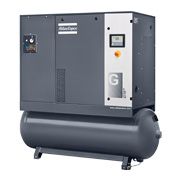
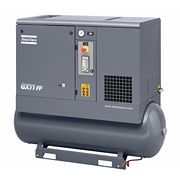
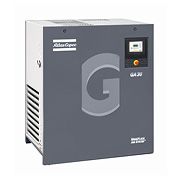
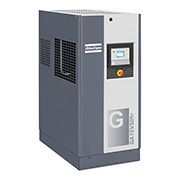
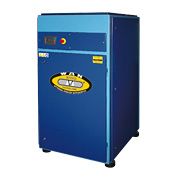

Login and Registration Form